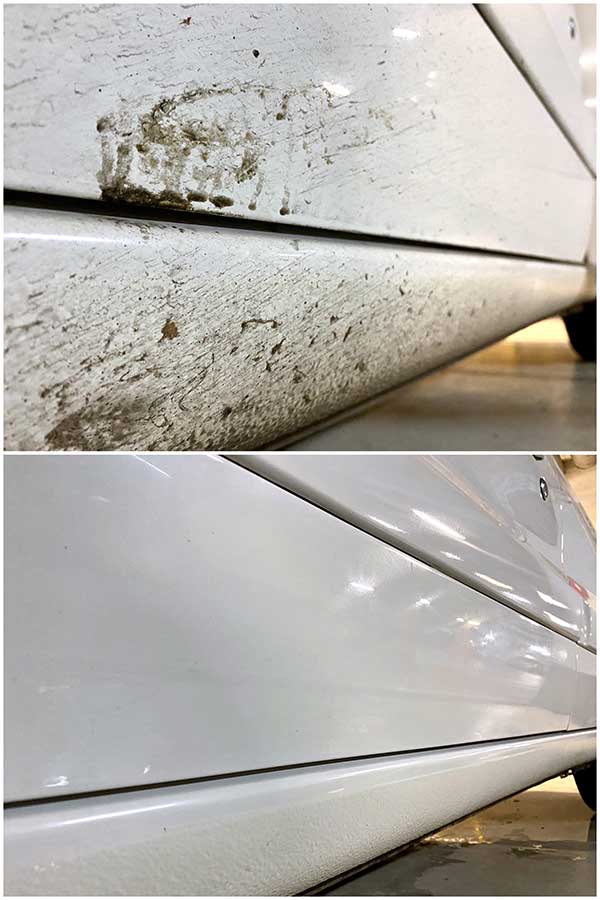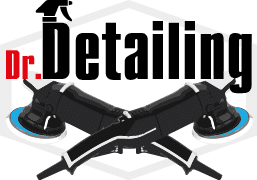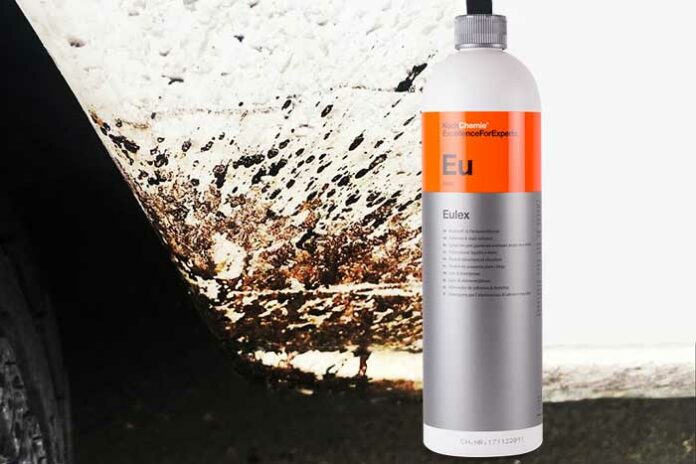Koch Chemie Eulex is one of the best products from Koch Chemie, the German brand founded in 1968, offering a wide range of products for your car.
The EU variant is renowned for its powerful effectiveness as a tar cleaner and for removing stickers or any sticky residue.
When a car shampoo leaves behind black spots or raised areas, especially on the lower parts of the car and near the wheels, it is likely that these are tar or bitumen residues. In such cases, it’s time to bring out the heavy artillery and forget about black soap, white vinegar, baking soda, or other household or maintenance products…
Let’s take a closer look at the product, its effectiveness, its positives, and any potential negatives.
Eulex is available at a great price here:
Finally, it’s worth noting that there is a smaller version of the EU, the Koch Chemie Tea, specifically formulated for tar removal and safer for trims, etc.
The tar remover Tea is available here:
Eulex in Detail
Koch Chemie Eulex, or EU, is a non-abrasive spray product designed to remove and detach various substances.
You can purchase Eulex and Eulex M here:
There is an Eulex M (a solvent suitable for matte paints and finishes) and an Eulex (a stain and adhesive remover). In this article, we focus on the standard EU version.
Koch Chemie EU is specifically designed to quickly eliminate:
-
Adhesives (label residue, etc.)
-
Rubber
-
Resin
-
Paint mist
-
Ink stains
-
Oils
-
Grease
-
Tar
-
On ceramics / lacquers / glass / metal (solvent-resistant)
-
And more.
The product evaporates quickly without leaving residues and does not contain halogenated hydrocarbons (Daimler approval).
It is suitable for use on painted plastics, car body paint, wheels, and more.
Using Koch Chemie Eulex
This tar contaminant works by quickly penetrating organic residues, softening them, and making them easy to remove.
We recommend applying it, undiluted, to a microfiber cloth, gently dabbing the stains, then rubbing without applying pressure (do not rub hard, it’s better to let the product work without drying).
Apply, let it sit for a few seconds, then wipe it off or rinse with water.
Do not use a sponge or brush. Let the cleaner work, then rinse it off. You can use a pressure washer with clear water to rinse and/or remove any remaining tar and dirt.
Here is a YouTube video comparing Koch Chemie Eulex and Sonax Teer Entferner (tar remover):
The Sonax product is also highly effective.
Warnings
-
Do not use Eulex on hot surfaces.
-
The product is not suitable for polycarbonate, polyacrylic, or other similar synthetic materials.
-
Do not use on plastics, rubber, and avoid applying it to seals as a precaution.
Advantages of Koch Chemie Eulex
Comparison with Other Products
Compared to Auto Finesse Obliterate, CarPro TarX, or TriX, Koch Chemie Eulex is more powerful.
Power of Action
It’s incredibly effective, but the downside of its power is that it can bleach plastic and rubber. So, be very cautious and thorough.
The product works very quickly. Rinse it off promptly once you’ve achieved the desired result. Do not leave it on the painted surface.
Here’s a before/after of a white car heavily contaminated with tar:

Another case with a paint transfer (first photo):
Voir cette publication sur Instagram
Price vs Effectiveness vs Economy
This is not a product to be sprayed liberally. Sold in a single 1-liter bottle, given the small amount used in a very targeted manner, you get good value for your money and will definitely have it for a long time!
An effective and economical product.
Eulex is available at a great price here:
Koch Chemie Eulex negative Points”
Odor of Koch Chemie Eulex
What all users agree on is that Eulex has a strong odor. The scent is similar to nail polish remover, but stronger. It is close to acetone.
That said, when it comes to dissolving tar, adhesives, sap, etc., you can’t expect a great product that smells like Chanel No. 5!
We recommend placing the microfiber cloths soaked in the product into a basin or bucket of water until you can wash them in the washing machine.
Spray Head (For Some Users)
Some users have reported that their spray head was damaged by leaving the product in the “circuit.”
We have never experienced this issue after years of use.
Possible Risk of Bleaching Plastics and Rubber
It may occasionally happen that, for example, when trying to remove tar from a wheel, the product deposits on the tire, leaving a whitish residue. However, this is a rare occurrence, and the same applies to plastics. After years of use, no bleaching has occurred. This doesn’t happen on all plastics or tires.
So, be thorough. For instance, it’s better to apply it to a microfiber cloth and then use it on the stain to be removed, rather than spraying it liberally.





